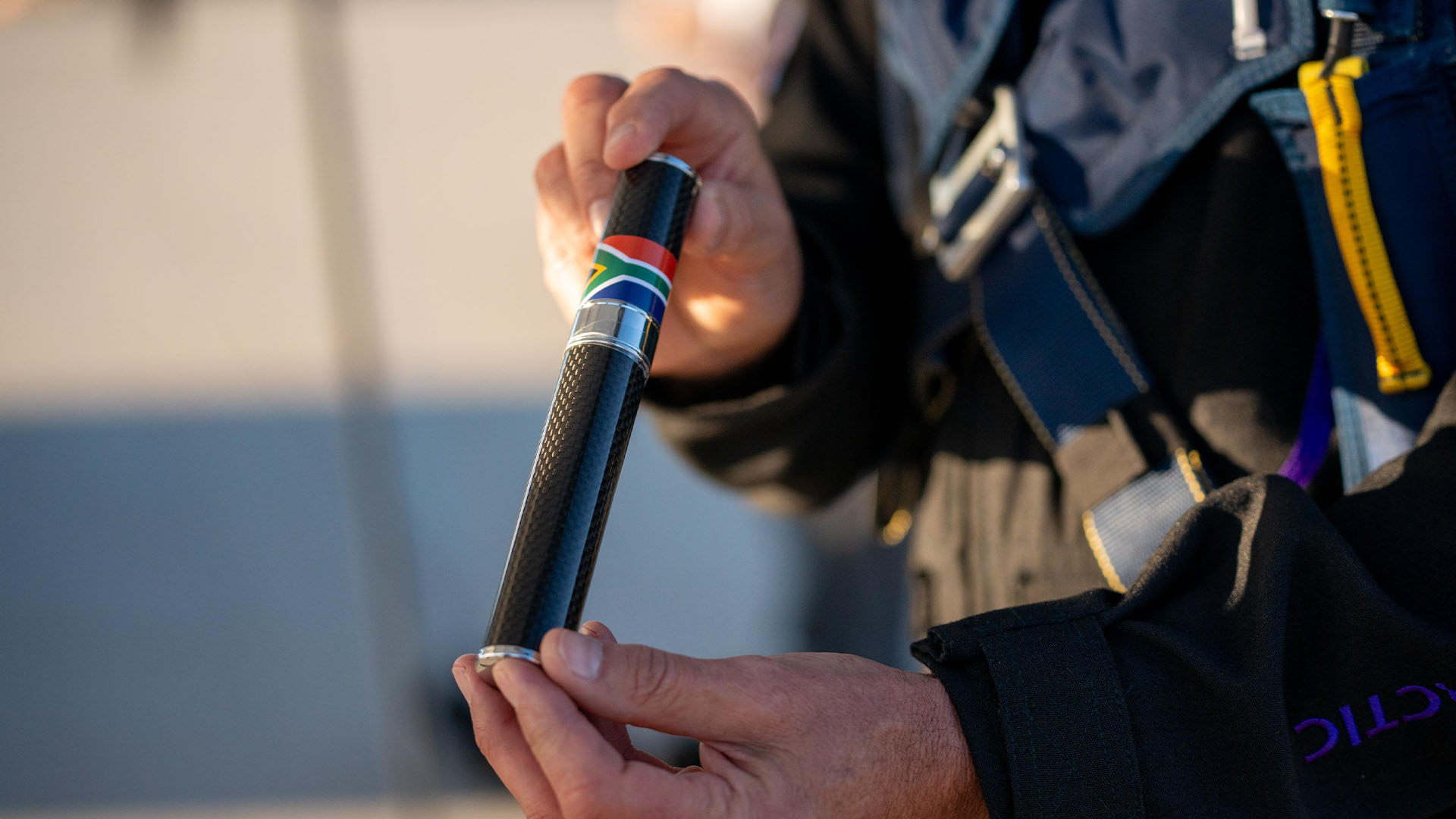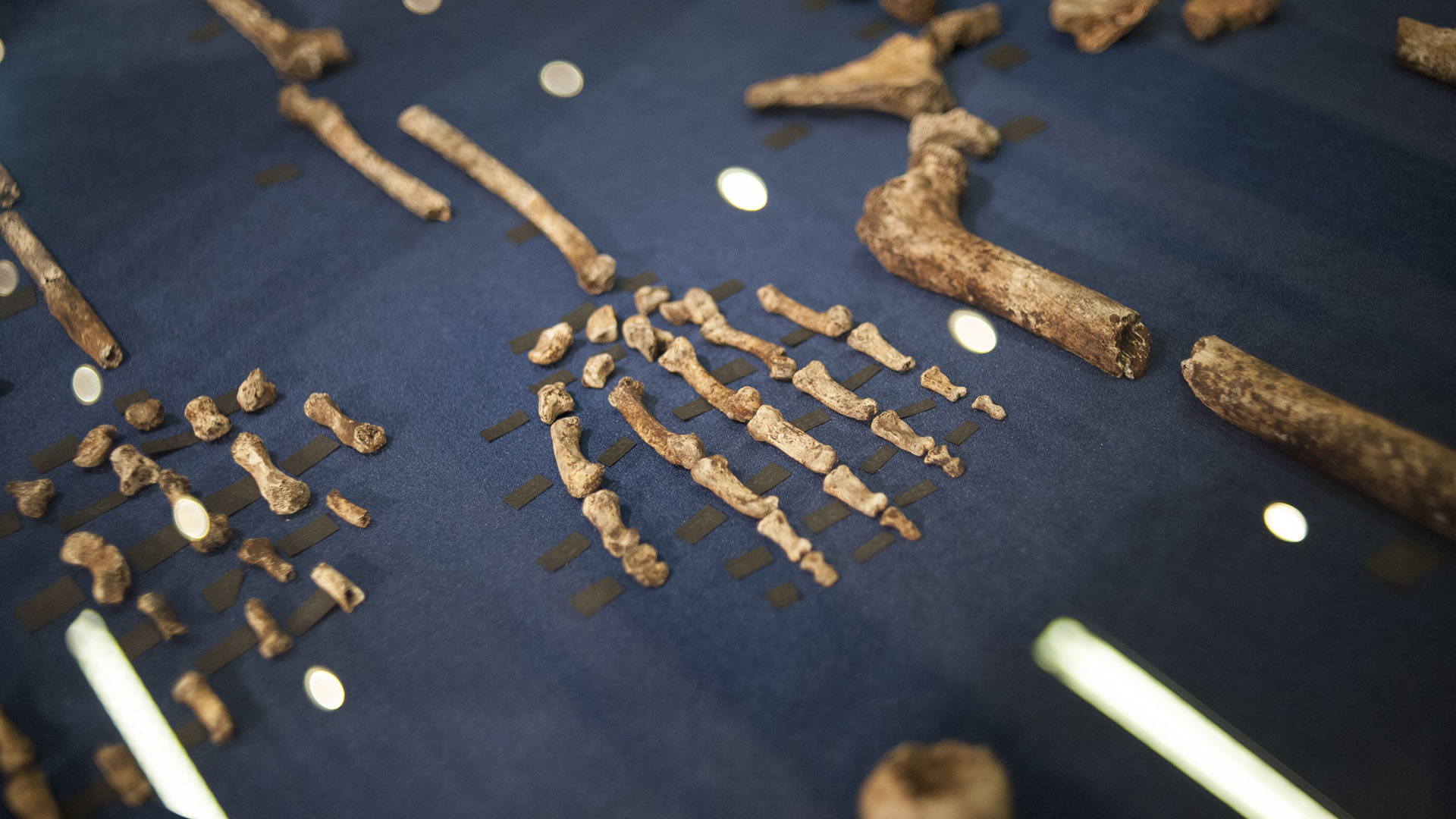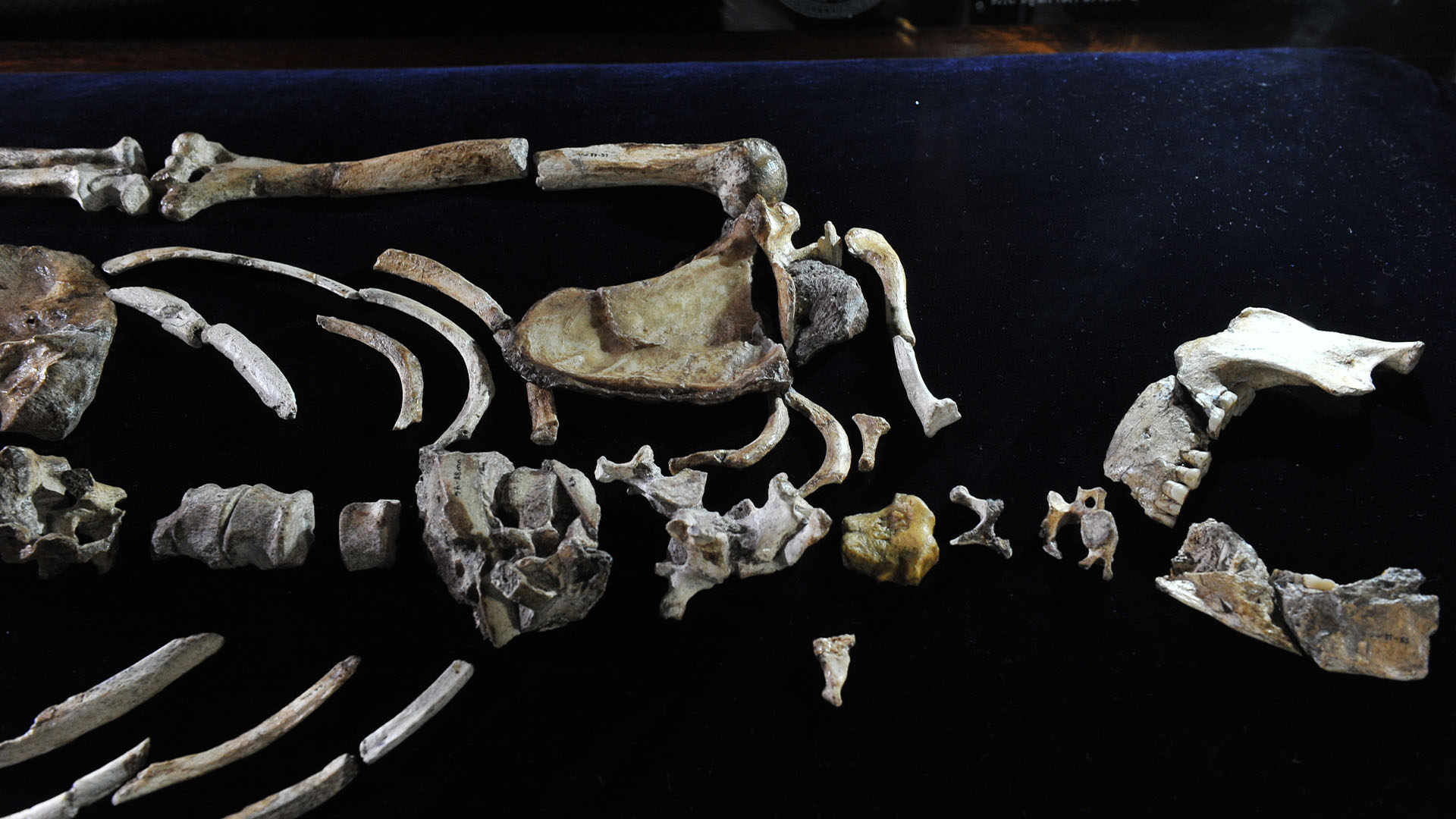'I am horrified': Archaeologists are fuming over ancient human relative remains sent to edge of space
Scientists are calling the Virgin Galactic mission that carried the bones of Australopithecus sediba and Homo naledi to the edge of space a major ethical breach.
For the first time, fossilized remains of ancient human relatives have gone to the edge of outer space — and scientists are not happy about it.
Fragmentary remains of two ancient human relatives, Australopithecus sediba and Homo naledi, were carried aboard a Virgin Galactic flight on Sept. 8. Departing from Spaceport America in New Mexico, the fossils, carried by South African-born billionaire Timothy Nash in a cigar-shaped tube, were rocketed to the edge of space.
The fossils were chosen by Lee Berger, a National Geographic Society explorer in residence and the director of the Centre for the Exploration of the Deep Human Journey at the University of the Witwatersrand in South Africa, who was instrumental in the discovery of both species. A fragment of the collarbone of 2 million-year-old A. sediba, first discovered by Berger's son Matthew in 2008, was chosen for the trip, as well as a thumb bone from H. naledi, the still-mysterious 300,000-year-old hominin found in the Rising Star cave in 2013 by a group of researchers Berger dubbed "Underground Astronauts."
Lee Berger did not reply to a request for comment by the time of publication, but in a statement, he noted that "the journey of these fossils into space represents humankind's appreciation of the contribution of all of humanity's ancestors and our ancient relatives," while Matthew Berger speculated that these hominins "never could have dreamed while alive of taking such an incredible journey as ambassadors of all of humankind's ancestors."
The fact that these ancient species would not have understood their journey into the upper atmosphere is one of many reasons anthropologists and others have critiqued the space flight.
Related: What did the last common ancestor between humans and apes look like?
In a thread on X (formerly Twitter), Alessio Veneziano, a biological anthropologist and co-organizer of the AHEAD conference (Advances in Human Evolution, Adaptation and Diversity), succinctly identified four main issues that have been discussed: 1) the lack of scientific justification for the flight; 2) ethical issues surrounding respect for human ancestral remains; 3) Berger's access to the fossils, which few other researchers share; and 4) the misrepresentation of the practice of palaeoanthropology.
Get the world’s most fascinating discoveries delivered straight to your inbox.
The fossils' space journey has been roundly criticized for lacking a scientific purpose, especially since a malfunction on the mission could have destroyed the priceless specimens. Berger's original permit request, which was ultimately approved by the South African Heritage Resources Agency (SAHRA), mentioned that the goal of the journey was to promote science and bring global recognition to human origins research in South Africa rather than to address any scientific questions.
The effects of spaceflight on heritage items "hasn't been an area of scientific study," Justin Walsh, a professor of art and archaeology at Chapman University in California, told Live Science in an email. "Space archaeologists like me are definitely interested in the effect of the space environment on items in space," he said, "but I don't think we'd use a piece of heritage from here on Earth as a test article to see what happens to it."
"I am horrified that they were granted a permit," Sonia Zakrzewski, a bioarchaeologist at the University of Southampton in the U.K., wrote in an X thread, noting she would use it as an example in her class about unethical approaches. "This is NOT science."
Walsh echoed Zakrzewski's concerns with the ethics of the flight. Because the fossilized bones are not just scientific specimens but the remains of our collective ancestors, we owe them respect, Walsh said. For the purpose of the permit, however, the fossils appear to have been categorized as paleontological — rather than human — remains, getting around ethical and legal issues, which speaks to the larger, ongoing scientific discussion of who we consider to be "human."
As of 19 September, at least four professional organizations have put out statements condemning the hominin space flight, including the Association of Southern African Professional Archaeologists, which noted that the venture "raises ethical concerns regarding the treatment of our heritage (ancestral human remains) while exposing the fossils to unnecessary risk for publicity purposes."
"As a sovereign state, South Africa can manage its national estate as it sees fit, including shooting part of that estate into space like the US, Russia, Denmark, and others all have," Rachel King, an associate professor of cultural heritage studies at University College London, told Live Science in an email. But "the fact that it happened through what looks like a standard compliance procedure should make everyone think about potential wider consequences," she noted, including future events that may put archaeological heritage at risk of destruction.
That documentation is a key aspect of Berger's permit request, in which he justified the selection of the fossils — and mitigated the risk of their loss — because they have been "extensively studied" and "published many times." But there are few fossil hominin casts other than Homo naledi available for study and public viewing, often owing to a lack of financial and material resources in the countries in which they are found. On top of that, the final major critique of the fossils' space journey is the entitlement and privilege revealed by the flight.
The fossils were carried aboard Virgin Galactic by Nash, whose father John made his fortune in aviation. Nash was one of the first people to buy a ticket on the second commercial flight of Richard Branson's Virgin Galactic space plane. Nash has also been friends with Lee Berger for over a decade and owns most of the so-called Cradle of Humankind — including the land where the Bergers discovered A. sediba, which he hopes to develop into a "paleotourism" industry.
While most paleoanthropological researchers do not have the access to land and fossils afforded to Berger, the problem remains, in the eyes of many, that Berger has misrepresented what these researchers actually do.
Two important ancient human relatives packed and ready to go where no extinct hominins have gone before! #neverstopexploring! pic.twitter.com/rngRVQipefSeptember 1, 2023
"This is an unusual activity for ancient fossils," Walsh said, with "no sign that Berger was interested in performing science and answering that question [on the effects of spaceflight] by flying the fossils." Instead, in keeping with standard scientific practice, Walsh would have liked an open dialogue about the mission, including more information about the risks and benefits, prior to the flight.
"We should ask: can the University of the Witwatersrand and Lee Berger be trusted to care for these fossils going forward, if this is what they think is an appropriate thing to do with them?" Walsh said.
Published on Sept. 12 and updated on Sept. 20 to note that four professional organizations have condemned the event since the article came out.

Kristina Killgrove is a staff writer at Live Science with a focus on archaeology and paleoanthropology news. Her articles have also appeared in venues such as Forbes, Smithsonian, and Mental Floss. Kristina holds a Ph.D. in biological anthropology and an M.A. in classical archaeology from the University of North Carolina, as well as a B.A. in Latin from the University of Virginia, and she was formerly a university professor and researcher. She has received awards from the Society for American Archaeology and the American Anthropological Association for her science writing.





